All marriages are mixed marriages. Catholics know this. It does not matter if both partners are committed Roman Catholics, were even raised in the same church, attended the same catechism classes in the same dank basement, were confirmed on the same day by the same bishop and matriculated at the same Catholic college. Among Catholic couples you may still find that one prefers this kind of Mass and one that kind, one adores the current pope and the other loathes him. One is committed to raising the children within the faith, while the other will give the children latitude to come to their own conclusions about God and the universe.
And I always imagine, as a Jew, that Roman Catholics have it easy. At least they have a fixed star, in the pope and the Vatican, to ground their arguments and measure the depths of their dissent. Think of what it is like for us Jews.
Let’s say you are committed to marrying within the faith, and at some point, against what feel like impossible odds, given our tiny numbers, you find a fellow Jew whom you wish to marry. That is when the negotiations begin! One of you never wants to go to synagogue, while the other would never miss it on Rosh Hashana. One of you eats only kosher food, while the other one loves a good bacon cheeseburger. Or you both keep kosher—but how kosher? One believes it is enough to refrain from work on the Sabbath, while the other refuses to drive or use electricity. One is committed to raising the children within the faith, while the other will give the children latitude to come to their own conclusions about God and the universe.
For two people with any religious identity at all, there is no marriage without negotiation.
This is all to say that, for two people with any religious identity at all, there is no marriage without negotiation. So actual interfaith marriages, the kind we think about when we think about intermarriage, are important because they throw into relief the problems inherent to all romantic unions. When, say, a Roman Catholic marries a Jew and together they embark on the journey of “How do we make this last for 50 years?” they are italicizing the questions that all of us who believe in long-term romantic unions ask, every day of our conjoined lives: When is a sacrifice worth making, and when is it too much? What do I really care about, and what is just my stubborn ego? Where do I end, and where does my marriage begin? And what do I owe to my religious community, which may need me as much as I need it?
Jewish-Catholic intermarriages are particularly interesting because of all that our two communities have in common. In the United States, most Jews and Catholics trace their ancestry to working-class Europeans who arrived in the late 19th or early 20th centuries, seeking economic opportunity above all. Jews and many Catholics, like the Irish and Italians, were not considered truly white, until one day we all were, more or less; they can have testy, passive-aggressive relationships with clerical authority; and they are both petrified that the whole shop is about to go out of business.
*
While we, as a nation, continue to profess belief in God at rates that are distinctly non-European, our specific denominational attachments continue to wane. According to a recent Pew survey, from 2007 to 2014, Catholic self-identification fell steeply, to 20.8 percent from 23.9 percent. Jews held steady at just under 2 percent. The survey showed an increase to 1.9 percent from 1.7 percent, which was within the margin of error and which, given the high birth rate of Orthodox Jews, probably masked a notable drop in identification among Reform, Conservative and secular Jews.
But underneath those statistics are plenty of people who care deeply about their particular traditions. Extrapolating from the Pew statistics on Jewish intermarriage (over 70 percent among the non-Orthodox) and overall Jewish population in the United States (about 5.3 million, if one includes nonreligious, ethnic Jews), there are tens of thousands of Jewish-Catholic intermarriages in the United States. And a good number of them surely involve partners with strong commitments to their separate traditions.
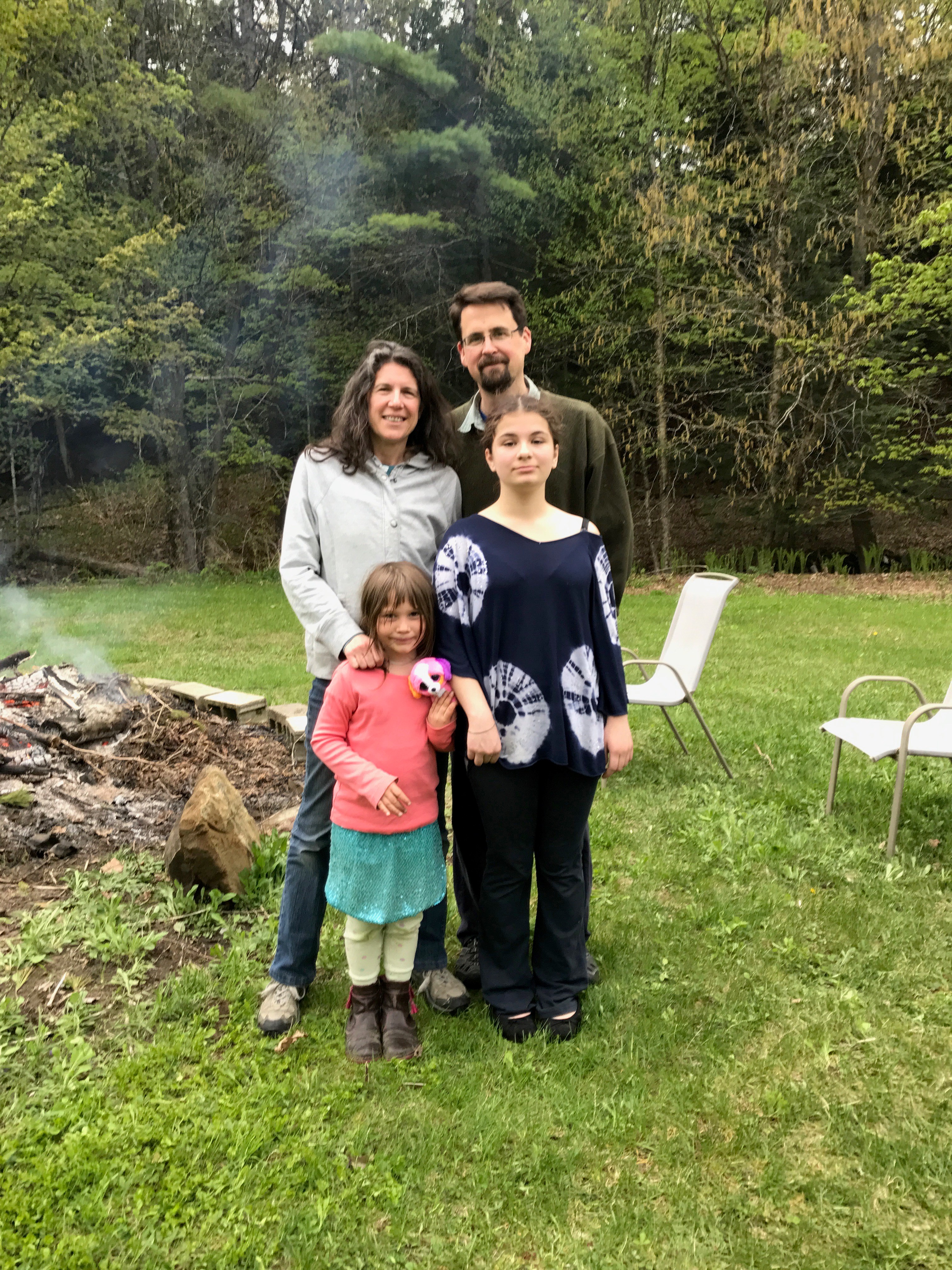
Partners like Michal Woll and Jon Sweeney. Woll and Sweeney married in 2010, a second marriage for each. He has two grown children from his first marriage, and they have a young daughter together, who is being raised as a Jew. Woll and Sweeney are not a typical intermarriage (as if there were such a thing). Woll, who grew up a Reform Jew in the Chicago suburbs, was a bioengineer, then a physical therapist, before becoming a rabbi in the progressive Reconstructionist tradition. She recently assumed a new pulpit at Congregation Shir Hadash in Milwaukee. Sweeney, the grandson of two evangelical Protestant pastors, attended Wheaton College, the conservative Christian school that counts Billy Graham among its alumni. After college he rejected evangelicalism and became an Episcopalian, then 20 years later a Roman Catholic. Woll and Sweeney, who in 2013 co-authored Mixed-up Love: Relationships, Family, and Religious Identity in the 21st Century, are thus seekers, finely attuned to the evolution of religious commitments.
From the beginning, Sweeney found his parents’ evangelicalism confining. Still, he had the goal of being a preacher, like his grandfathers before him. After his freshman year at the fundamentalist Moody Bible Institute, Sweeney spent the summer doing missionary work in the Philippines. Sitting in these Filipino-Catholic houses, trying to de-Catholicize the inhabitants, Sweeney was intrigued by iconography all around him. “I would look at all their Catholic stuff, and I was very interested, like in their home altars and their pictures of saints,” he said, when I met him and Woll in the comfy, New England-y Vermont house they were about to vacate for Milwaukee. But in terms of becoming a Catholic, it was not in the cards, not just yet.
After returning from the Philippines, Sweeney began occasional visits to Gethsemani, Thomas Merton’s famous Trappist monastery in Kentucky. Briefly, he thought about becoming a Catholic monk, then dropped the idea. He transferred from Moody to the slightly more liberal Wheaton and afterward attended North Park Theological Seminary in Chicago. But he left before ordination to get married, at age 21. He said he knew right away he had made the wrong decision. Sweeney and his first wife separated in 2007 and divorced two years later. Meanwhile, he had developed a career in religious publishing, including a stint, from 1997 to 2004, at Jewish Lights Publishing, which brought him to Vermont. And in 2009, as a single father of two, working for a Jewish company, he became a Roman Catholic—“mostly because it felt like that’s where I had been directed for a long time.”
It was a strange time for him to become a Catholic, he is the first to note, because he was received into the church four days after becoming engaged to Woll, a local rabbi in Vermont whom he had met through mutual friends. She was away in Chicago when he became a Catholic. “I was actually glad that she wasn’t there,” Sweeney said, “because it was all so fresh, and we were trying to figure out how we were going to work together. It was uncomfortable anyway.”
Like her husband, Woll has a long history crossing denominational lines, albeit within Judaism. She grew up attending a Reform temple, but did not attend Hebrew school. Then at 12, she requested a bat mitzvah ceremony. Her parents said yes, and she had a lot of catching up to do. “So I went to Jewish overnight camp,” she said, “and did a crash course in Hebrew and caught up with my friends and started going to [Hebrew] school three days a week.” Still, Judaism remained primarily cultural and artistic.
Years later, after Northwestern and then graduate school at M.I.T., she was living in Delaware, working for the company that makes Gore-Tex products. At the local congregation she attended, Woll encountered Jewish Renewal, a left-leaning, hippie-ish strand of Judaism that emphasizes personal piety and mystical experience. In the summer of 1995, she attended a conference where she heard Zalman Schachter-Shalomi, Renewal’s founding rabbi. “And he said, ‘The world is an economic mess because money doesn’t rest on Shabbos’”(the Sabbath), Woll recalled. That insight changed Woll’s relationship to Judaism, giving a beloved cultural practice a sense of calling. When she left Delaware for a physical therapy career in Flagstaff, Ariz., she became a lay leader of the synagogue there. “I slowly spent all of my spare time doing Jewish stuff,” Woll said. In 2001 her spare-time hobbies became her full-time vocation, and she started at Reconstructionist Rabbinical College, outside Philadelphia. In 2007 she moved to Vermont to work at her first congregation, where she met Jon Sweeney.
As a Reconstructionist, Woll belongs to the stream of Judaism most comfortable with intermarriage; as a rabbi, she has never had a problem performing marriages between Jews and non-Jews. But it is still unusual for a rabbi to share her life, and the responsibilities of parenting, with a Catholic husband.
When I asked if there have been any religious tensions, Woll mentioned the day she realized she could no longer attend church with Sweeney, which she had done on occasion.
“I think when I finally realized that I simply couldn’t go to church at all, there was some sadness in that,” Woll said. She had hoped, early in their marriage, that she could share an experience that was so meaningful to him, if not as a worshiper then as a kind of fellow traveler. “I remember the first time I went to church with him, and I really got it, like, I got him in church, I understood the power of the ritual, I knew something happened to him in the process of going and taking Communion.” But eventually she realized that his tradition excluded her, in a way that hers, preceding his and being incorporated by his, did not exclude him. One day she just walked out.
Sweeney listened, and nodded at this shared memory. “There was sadness for me around that,” he said. “I think I pretty quickly realized, though, and I still feel this way, that it’s really to her credit—this sounds bizarre—but it’s to her credit that she’s uncomfortable at Mass. And I think it makes us better people in our traditions that we—what I mean is that it’s to your credit”—here he turned to Woll—“that you’re uncomfortable in Mass, that you’re not just there sort of cheering along with me.”
“I’m actually paying attention,” she said.
“Yeah, you’re fully who you are, and I fully love who you are, and I would rather you not be the one who’s just comfortable sort of cheering along with whatever.”
Sweeney admires that Woll takes religion seriously enough to have been uncomfortable. But one also gets the sense that he admires her for the ways in which she is like him. That is, they get each other. Both are seekers, who have found their way, circuitously, to a tradition that gives them meaning. Neither of them is a scriptural literalist—when asked if he believed Catholicism was true, Sweeney said, “It’s not a category that I really use.” They are both ritual junkies, who think of all rituals, their own and each other’s, in instrumental, rather than metaphysical, terms: “There’s a way in which I don’t feel like his going to Mass is very different than me going to yoga class,” Woll said.
She may be slightly underestimating what Mass means to her husband, who told me that “she knows that there are times when Mass brings [him] to tears.” But overall, he said, “her comparison makes a good deal of sense: Mass as a sort of exercising and stretching of the soul.” They tend to see eye to eye on the big things, so when they quarrel, it’s more that they quibble: he doesn’t like the Friday-night Kiddush prayer, and when they were first courting, she wasn’t comfortable with the crosses that hung on his apartment wall.
He took down the crosses. They have agreed to raise their daughter, Sima, now 6, as a Jew, which he said felt natural to him, both because he had deep experience with Judaism and because his theology had predisposed him to a sympathy with the Jewish story. “I’m sure I had this in the back of my mind: the Jews are our elder brothers. I mean not that I’m looking for prooftexts for Judaism in the home, but I totally believe that and feel comfortable with it. You guys came first, you know.”
And finally, as it happens, there are Jewish things he knows that she doesn’t. After all, she moved to Arizona, whereas he always aspired to a kind of Jewish urbanity. “I grew up watching Woody Allen movies,” Sweeney said. “I know Seinfeld and she doesn’t.”
*
Woll is the rabbi, Sweeney is the religious-books editor, who now works for Ave Maria Press, a Catholic publisher. But their religion is, in each case, more experiential, and mystical, than theological. This presents its own problems, but saves them others. Rusty and Juliana Reno are a different kind of interfaith couple: believers in a conventional God, they are both intensely theological, in love with abstruse argumentation, less mystics than big old nerds. But like the Woll/Sweeneys, the Renos have both been transformed, religiously as well as personally, by their interfaith romance.
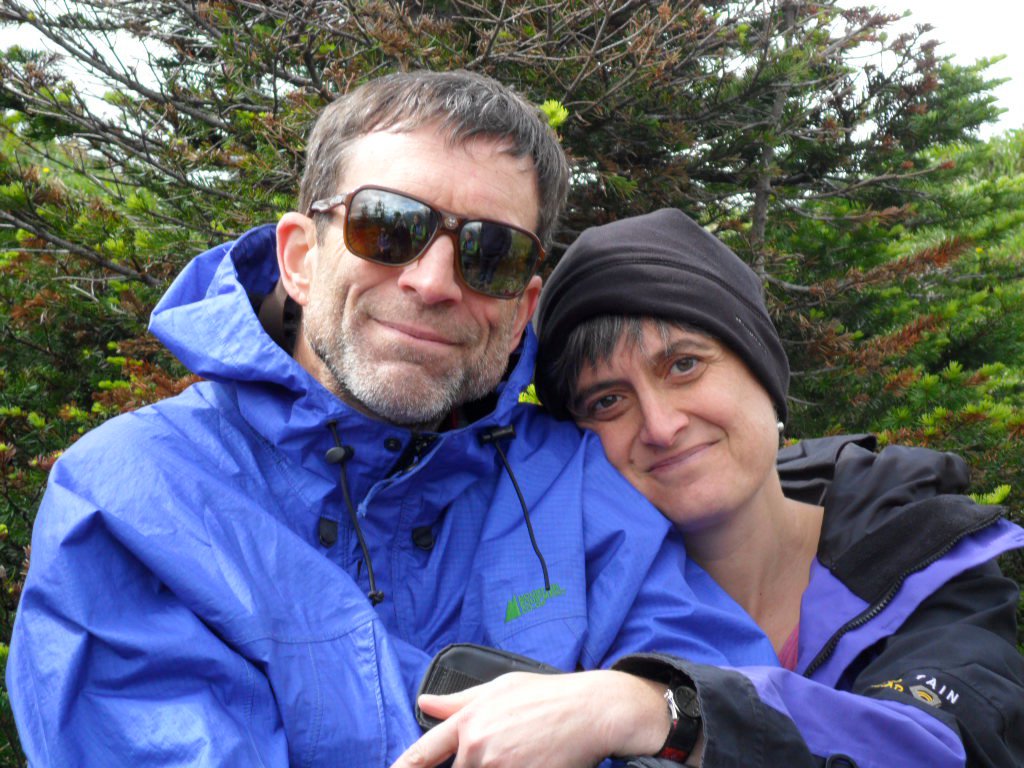
R. R. Reno, known as Rusty, is now editor of First Things, the conservative Christian political journal; for many years he taught Christian ethics at Creighton University in Nebraska. He met Juliana when he was a graduate student at Yale, teaching a discussion section of a lecture class in Christian ethics. The two Renos have never agreed on religious or political truth, but they agree on certain fundamentals, like what sorts of things matter. For example, they both wanted a religious wedding, one that obeyed the precepts of one tradition or the other. When they could not find a rabbi to marry them, they went to his Episcopal church and used the service in the Book of Common Prayer—although they added the traditional Jewish Seven Blessings at the end, which his priest agreed did not invalidate the Christian ceremony.
And they agreed that one could not coherently raise a child “in both traditions.” She insisted that their children—they have a daughter and a son, now grown—would be raised as Jews. He agreed in principle, but with a caveat. “He said, ‘Look, I go to services every Sunday; you never go’ to synagogue,” Juliana Reno told me when we met recently at her law office in Midtown Manhattan. “‘Not that I am blaming you, but if that doesn’t change by the time we have kids, I am not going to be that supportive. But I have no inherent objection.’” He would have Jewish children, but they had to be raised with a Judaism that was more than occasional, and full-hearted, not half.
“So I said, ‘That’s fair,’” Juliana Reno continued. “So the Saturday after we got married, I started going to Yale Hillel, and I have gone to services almost every Saturday since then. Which surprised him. The last four years I have gone to daily minyan, too.”
I had questions. So many questions. How did they make it work? Politically, religiously, as parents?
Politically: “I’m a liberal Democrat Jew,” Juliana Reno told me, “and he’s a conservative Republican Catholic. Although we’re both more moderate than anything else.... When we talk about politics, we do it carefully—we say, ‘Okay, I want to talk about a political issue now.’”
Religiously: “I had a boyfriend in college who was Jewish but an atheist. I find it much easier to be with someone who believes to the same depths I believe, even if he believes different things.”
And the children: “He did think his witness would have more of a potent impact on both me and the children…. When he started teaching at Creighton, and the kids got past a certain age, I said, ‘This isn’t good—you think about Christianity all day every day, and I am only doing Judaism once a week, so I need to do Judaism every day so it doesn’t go away just by attrition.” So they started keeping kosher, mostly—no pork, no shellfish. Two sets of dishes.
In 2003, when Rusty Reno was considering converting to Catholicism, his wife’s first response was to joke about it. “I said, ‘Honey, all those times we talked about converting, I meant Judaism!’” But her second response was to give him spiritual counsel. “I made my crack, then said, ‘Okay, honey, you need to find a spiritual advisor, and pray on this for a year.’” He did, and in 2004 he was received into the Catholic Church.
When I asked him, in an email, to talk about what it was like to be in a Catholic-Jewish intermarriage, he suggested that instead I go read his 2007 essay “Faith in the Flesh,” written on the occasion of his daughter’s becoming a bat mitzvah. Early in the essay, he recalls the occasion of his son’s ritual circumcision, how it made him question the quality of his own faith: “Circumcision is a ruthlessly physical act.... My mind was utterly disordered by the visceral reality of the event. But one thought came, and it has so lodged itself in my memory that I am very nearly consumed by it to this day. It was a thought of self-doubt, a worry about the invisibility of my own faith.” Jews were marked by their faith, but was he? “Where had God’s commandment set me apart and marked me as Christ’s own? Did we—no, did I—make the commandments of God into empty ephemera, ‘spiritual’ and pious commitments that the currents of culture eroded and obliterated the moment I left the church?”
Reno’s essay is an argument, although he never quite says so, for intermarriage. In his reading, marrying a Christian made Juliana more Jewish, in a way to which no true Christian could really object, and also made him more Christian, more attuned to the carnal nature of sacrifice. He never quite says that his bleeding son reminded him of Christ on the cross, but he does not need to. At his daughter’s bat mitzvah, she too becomes something of a sacrifice to God the Father, inasmuch as she has been sobbing because her father, as a Gentile, cannot stand with her as she reads Torah.
“She was angry,” Reno writes, but “neither the rabbi, nor her mother, nor I could give her what she wanted. In fact, I did not want to give her what she wanted, for her desire was that obedience to God would not require the pain of renunciation, would not require the visible marks on our bodies....” And so as her brother was marked by his cut penis, she is marked by the bitter tears of separation from her father. And so, in the pews, “I feel the tears on my cheek, and the liquid fire of her voice [chanting Torah and] touching the lips of my unclean heart. O, the depth of the riches and the wisdom and knowledge of God!”
The Sweeney/Wolls and the Renos have in common that each pair is simultaneously alike and different; within each couple, the content of their religiosity differs, but the quality of it, the way they believe, is quite similar. They disagree, but they know what they are disagreeing about.
*
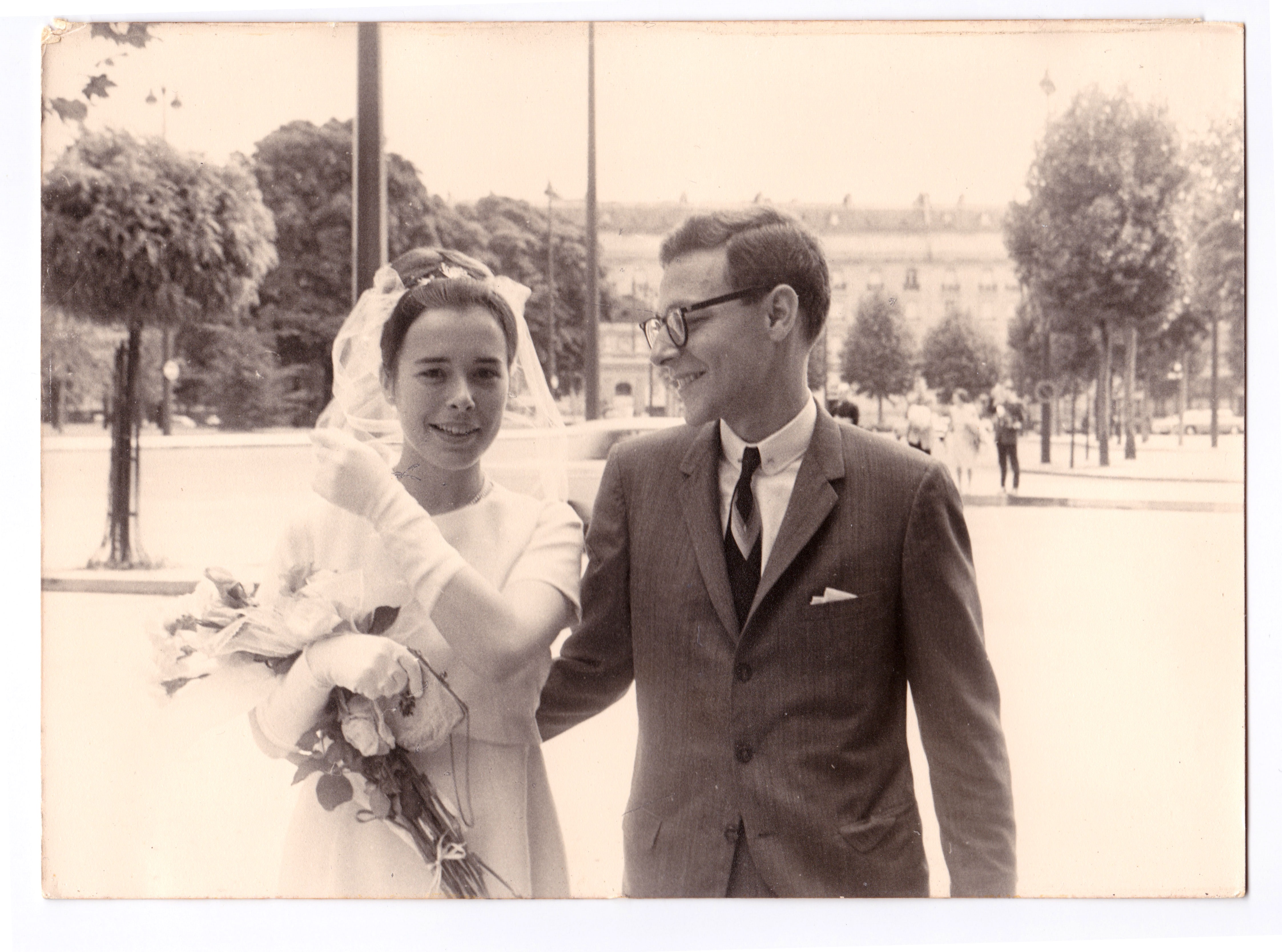
But there are at least two other categories of interfaith couples, roughly speaking. There are those who are both equally indifferent to the religions they grew up in, who may have faint pangs of nostalgia or appreciation but are pretty comfortable existing as secular Americans, perhaps with a Christmas tree here, a relative’s Passover seder there. And then there are those far rarer families in which one member is, or becomes, quite serious about religion while the other remains indifferent, or perhaps scornful, or just bemused, or even supportive.
Take, for example, Anna Gold’s parents. Her mother was a Frenchwoman, an exchange student at Wellesley, who met her father—“typical Jewish New Jersey, upper-middle-class, Conservative Jew”—over dinner at a professor’s house. “They fell in love pretty much immediately,” said Gold, who works for a nonprofit organization in Brooklyn. When they wed in 1964, her father’s parents were “devastated,” Gold said. “He was disinherited by an uncle. They begged my mom to convert, but she didn’t want to.”
The couple were childless for many years. Anna, their only child, was born in 1981, when her mother was 41 years old and her father was 46. “A few years before I was born,” Gold said, “my mom was having some issues with depression. She joined St. Paul’s Church, in Cambridge, started attending Mass, becoming involved. When I was born, I was baptized.”
Her father was not disturbed by his wife’s newfound religiosity. And while he never became a Christian, he helped his wife along in her observance. On Sundays, Marie-Hélène Gold began offering intercessory prayers—written by her husband, with his more fluent English. “My mom would do the Prayers of the Faithful, and my agnostic Jewish dad was writing these prayers that my mom was reading,” Anna Gold recalled. “People would say, ‘They are so beautiful, you should publish them!’”
Gold still has some of the prayers, typed up by her dad. Sometimes the prayers were inspired by New Testament passages, sometimes by the Hebrew Bible: “May the three angels who appeared to Abraham as homeless strangers, and whom he received so hospitably, open our hearts to the homeless, for every homeless person is or ought to be an angel to us. May we and our leaders remember what Blake once said, that to turn a homeless person away is to turn an angel from our door.”
In this short, simple prayer, we can see how a Jewish intellectual joins forces with his Catholic wife, newly religious, not quite the woman he married but no less his wife for it. In Gold’s case, Catholicism was at least a partial cure for his wife’s depression, so he owed the church as much as she did. So when taking part in their new, shared project of writing literature together—prayer as literature, but literature nonetheless—he composes a text that (as it happens) honors his own religious tradition, and his vocation as an English professor, and the church that she now calls home. He marries a patriarch to a Romantic poet, then offers the syncretism to the Catholic faithful. “I grew up with that duality,” Gold said, “knowing it was the same god but there were two ways of seeing Him.”
The Renos know that they will have to reckon further with their theological differences, if not in this life then in the next.
A more orthodox believer would say that while there may be two ways of seeing God, ultimately only one way can be correct. The Renos, for example, know that they will have to reckon further with their theological differences, if not in this life then in the next.
“Do you know C. S. Lewis’s The Great Divorce?” Juliana Reno asked, when I inquired if her husband was worried about her soul. “The gist is that there’s a bus ride from Hell to Heaven. And you get to Heaven, and you find out the answer, and you have to either accept it or not, and if you don’t, you get back on the bus. I said to Rusty, ‘We get to the other side, find out the real thing, and have to accept it. If I’m right, you have to pony up.’”
CORRECTION, Aug. 28: Jon Sweeney is the grandson of two evangelical Protestant pastors, not the son of an evangelical pastor, as originally reported.


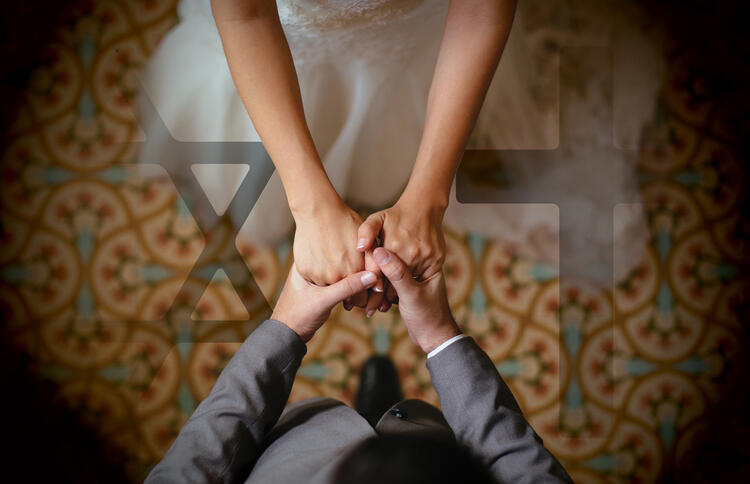


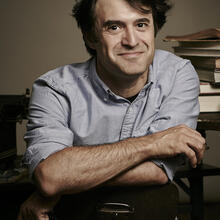





It's interesting reading this article in light of some of the research I have been doing recently on some of the earlier Church councils. The Third and Fourth Councils of Toledo, which both had the heavy involvement of St. Isidore of Seville, both mandated that the children of such mixed marriages be baptized, and severely frowned on mixed marriages generally.
Worth remembering that separation and segregation between faith traditions was considered a desirable thing for many centuries, often on all sides. Liberal tolerance of such things is a relatively recent thing, less than 200 years old in most cases.
This Polish American cradle Catholic from OH married a nice Jewish boy from NY 37 years ago this month and have been very happy ever since, in spite of initial resistance from my parents and reactions from other Catholics and Jews . His family loved me, and my parents eventually came around. As the article points out, it depends on the couple and their flavors of faith. My husband was raised in a very secular household in which his parents rarely went to a temple or celebrated the holidays. I was educated in RC and also public schools with lots of Catholics. In college I met lots of Jews, dated Jewish men, and liked them as a group a lot. I met my soulmate when we were Army officers stationed in Germany. We later had two daughters we raised in the church. Although a practicing Catholic, I decided they should also know about Judaism at least culturally, plus I enjoy cooking, so I hosted family events like seders and Rosh Hashanah dinners. Occasionally they went to temple with their Jewish grandparents who celebrated first communions and confirmations with us. My husband never had any interest in becoming an observant Jew or converting to Catholicism or any other form of Christianity. He supported the religious instruction of our daughters and attended watershed events at our parish like his parents. The older daughter, who seriously considered conversion to Judaism and went on a Birthright trip to Israel, came back to the church later when she began to practice law. My girl saw what the church did for the poor and dispossessed, and decided that she wanted a RC education for any future children. She and her husband, a Protestant who attended RC schools, are raising their sons in the church. The younger girl, who graduated from an RC high school and a UMC college with lots of RC students, is attending religious instructions at a reform temple and definitely thinks she will convert to Judaism. Go figure! We are all OK with each other, because we love each other, differences and all... In the end, that's the most important thing--- that we love God and each other.
This article had great meaning for me personally, as well as spiritually. In December, 2017 I will celebrate 50 years of marriage to my Methodist Christian wife. As a young man, my Catholic pastor passionately tried to dissuade me from proceeding with Cana instruction. I suspect most Catholics, and certainly priests consider me excommunicated because of my views in senior years. The fact is I respect my wife's upbringing, including family and church life. To complicate matters, my career as a musician, teacher, performer allowed me to direct choirs in seven Protestant, one Jewish and eight Catholic places of worship. I respect and love all of these people. I don't look at them with the suspicion I was taught in my parochial schools from K through University grad. My placement in a family tradition, race, ethnicity, corner of the world is ordered by God, just as it was for my Protestant wife. Although I respect my Catholic faith, I am not convinced the people I've encountered in different faith backgrounds have any less of a chance for salvation. I respect your view if you disagree, but it works for our 50 years of marriage.